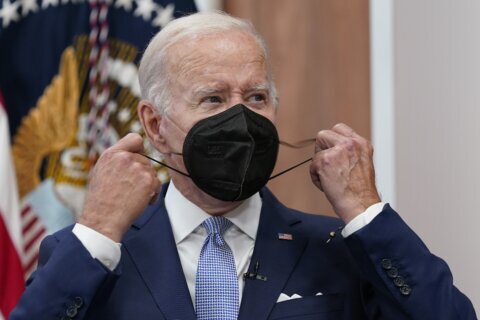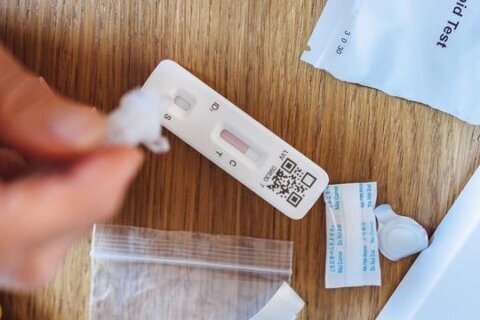When Suzanne Wright got the phone call on last Tuesday that her 84-year-old mother, who lives in a Florida nursing home 1,600 miles away, tested positive for COVID-19, she was a little perplexed.
“My first feeling was, how is this possible? I just got a call in the middle of last week that she was negative,” said Wright, who lives in Arizona.
The nursing home had 11 case the week prior, “their first big run of cases among residents,” said Wright, adding that some staff had also tested positive.
Wright’s mother, who has Alzheimer’s, is on the leading edge of worrisome national trend: Confirmed COVID-19 cases in US nursing homes are rising rapidly again after a steady decline in June.
The American Health Care Association and National Center for Assisted Living (AHCA/NCAL), which released a report this week highlighting the steep increase in cases, said it’s no surprise.
“As we feared and have been warning government leaders over the past couple months, the spike in COVID cases in the general population across the U.S. has led to increased cases in nursing homes,” Mark Parkinson, president and CEO of the AHCA/NCAL, told CNN via email.
The AHCA/NCAL report used data from the Centers for Medicare & Medicaid Services, which, in conjunction with the Centers for Disease Control and Prevention, started compiling weekly statistics from nursing homes in May. Those numbers show that COVID-19 cases rose to 8,628 for the week of July 19 from a low of 5,468 for the week of June 21, just a month earlier. (July 19 is the last week for which complete information is available. Incomplete information for the week of July 26 puts the weekly number of confirmed cases at more than 12,000 so far.) The report shows deaths are also trending up but, as of the week of July 19, not at the same rate.
The uptick in nursing home cases tracks with the soaring number of infections among the general population in late June and July, according to the AHCA/NCAL report. Florida and Arizona, along with Texas and California, have topped the list of states with the highest growth in infections in recent weeks. Lack of rapid testing and an inadequate supply of personal protective equipment (PPE) is compounding the problem.
“As the CMS data shows, the increase in new cases in nursing homes is being driven by the spike in cases in the surrounding communities and exacerbated by shortages in PPE and the significant delay [up to five days or longer] in obtaining test results for nursing home staff and residents,” said Parkinson.
Infectious disease expert Michael Osterholm, director of the Center for Infectious Disease Research and Policy at the University of Minnesota, said it’s not unexpected.
“Long-term care is, unfortunately, an indicator of what’s happening in your community [at large] — meaning that as much as you try to bubble them from the virus in the community, it’s a very vulnerable location, because you have people who work there [going in and out], as well as family and friends of those who live there,” he said.
And because the nursing home population is so susceptible to getting sick — because of their age and underlying health conditions — all it takes is one infected person to work or visit the long-term care facility and, Osterholm said, it’s “like putting a match to a gas can.”
The need for more money
AHCA/NCAL, which represents more than 14,000 nursing homes and assisted living communities that care for approximately 5 million people, is asking federal and state public health officials to take immediate steps to protect those communities, especially in areas with significant increases in new COVID-19 cases.
“Without adequate funding and resources, the US will end up repeating the same mistakes from several months ago. We need public health officials to focus on reducing spread within the larger community and prioritizing long-term care for resources, like PPE, testing, staff support and funding, so we can prevent the virus from coming in to nursing homes and help staff take targeted action if it does. With the proper resources, long term care facilities can better identify who has the virus and make tactical decisions to protect residents and staff,” said Parkinson.
A recent AHCA survey of 463 nursing home providers (most with multiple facilities) found that 55% of nursing homes are operating at a loss now, with 72% saying they won’t be able to sustain operations another year at the current pace. Respondents say this has been driven by the increase in costs responding to COVID-19, including paying for PPE and testing, as well as staff hero pay and additional staffing.
AHCA/NCAL urged Congress — which is hashing out details of the next of the next economic stimulus package — to budget an additional $100 billion for the US Department of Health and Human Services Provider Relief Fund — earmarked for hospital and health care providers. The groups want a sizable portion of the fund be dedicated to helping nursing homes and assisted living communities so that they can acquire resources associated with protecting vulnerable residents and staff from the virus, including constant testing, PPE and staff support.
The original funding for the Provider Relief Fund through the CARES Act, signed back in March, was $175 billion. A spokesperson for AHCA/NCAL said, “nursing homes only got about $14 billion through that fund.”
In late July, the Trump administration announced that it was sending an additional $5 billion to nursing homes and state veterans’ homes from the Provider Relief to fight coronavirus. That’s in addition to the $4.9 billion nursing homes received to offset revenue losses and to respond to the pandemic.
Also in late July, CMS started requiring — not just recommending — that nursing homes in states with a 5% or greater coronavirus positivity rate to test all staff each week. The administration announced at the time it was distributing 600 rapid testing devices to nursing homes, with more than 15,000 devices to be deployed in coming months.
“While we are making progress, we need Congress to prioritize our vulnerable seniors and their caregivers in nursing homes and assisted living communities in this upcoming legislation,” said Parkinson.
Worried family members want to visit loved ones
Across the country, family members want to visit loved ones who have been in lockdown mode for months. About 30 states now allow for some kind of visit from outsiders but with very strict rules. CMS Administrator Seema Verma said that if there are no cases inside a nursing home for two weeks, the agency recommends that visitors be allowed — but they must get tested before entry.
Within the CMS guidelines for reopening nursing homes is a recommendation that facilities continue to ban visits until there is a decline in cases in the surrounding community.
Reopening is a big concern to Parkinson if the proper provisions are not in place.
“Providers are eager to welcome back family and friends to our facilities, but the health and safety of our residents and staff will always be our top priority. With major spikes in cases in several states, as well as significant upticks in many counties across the country, we are really concerned about reopening many long-term care facilities,” he said.
Osterholm agrees; he draws parallels between trying to open long-term care facilities and trying to open schools. “It’s pretty tough to try planting your petunias in the middle of a Category 5 hurricane. And if you’re trying to reopen schools or long-term care facilities to the public, which we all want … it’s very hard to do if there’s increased occurrence of infection in your community,” he said.
“This is not a unique challenge to one state — it’s obviously all 50 states and the District of Columbia right now have that problem. And so, the challenge is just how do you balance safety and, at the same time, livability,” he said.
Wright, whose mother is in the Florida nursing home, counts herself among those eager to pay a visit, even if the state doesn’t reopen facilities. She sought counsel from a friend who’s an administrator in a nursing home about how to broach such a conversation. “I want to know how [the nursing home] is setting up for compassion visits. If this is going to go downhill, I live 2,000 miles away and I need to plan ahead to see my mom,” she said.
At the moment, Wright’s mother is asymptomatic.
“I’m anxious,” she said. “I was expecting this. I just figured it was a matter of time before this call. And I’m more frustrated by the lack of information that’s being eked out.”







